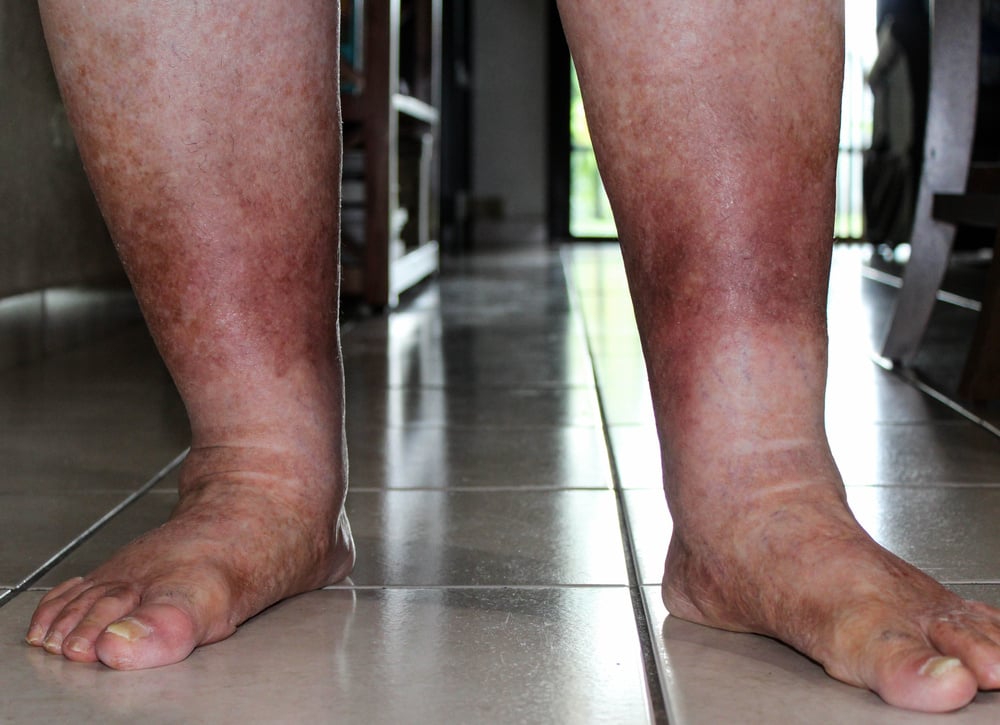Why Do I Have Red or Brown Skin Stains on My Leg?

It is very common for people with advanced vein circulation abnormalities to see brown or red splotches appear on their lower calves and ankles. These skin stains appear for different reasons, depending on the color. In this video, I answer the question about what they are and why they appear.
In my experience as a vein care practitioner, I see skin stains as the result of vein circulation abnormalities on a regular basis. They occur when the vein circulation in the legs isn’t functioning properly and blood ends up pooling in the legs. This is a condition called chronic venous insufficiency. The discoloration happens as a result of the build-up of stagnant blood in the lower legs. The stains you notice may be either red or brown and occur for different reasons
Red Skin Discoloration
Stagnant blood in the lower legs causes inflammation. Inflammation has a very characteristic appearance and causes a red patch to appear on the skin. As the inflammation progresses over months to years, the skin can get quite tough and thick and hard. That’s because the skin is forming scar tissue. Scar tissue as the result of inflammation is typically part of the body’s natural healing response. In the case of chronic venous insufficiency, the inflammation is a response to abnormal circulation. In these situations, the red discoloration most often occurs in the lower calf or inner ankle area. , and often this area itches severely.
Brown Skin Discoloration
Brown skin discoloration is there for a slightly different reason. The brown splotches occur because pooling blood is under pressure and the red blood cells inside leak out into the tissue. In the tissue, there are certain cells called macrophages. The job of macrophages is to protect the tissues from any foreign material. As the leaked blood cells break down, hemoglobin (hemoglobin is inside the blood cell and carries oxygen) is released. It is hemoglobin that is tinted brown because of the small amount of iron in the hemoglobin. Macrophages react to the hemoglobin in the tissues by cleaning it up and consuming it. Because the hemoglobin is tinted brown, the macrophages take on that hue. This creates a brown stain on the skin that is permanent. It’s the same process used in getting a tattoo. Once that brown stain is there, it doesn’t usually go away.
The good news is that vein treatments have been known to improve it or lighten it up so that it isn’t as pronounced. That’s why the best treatment is to catch it early before it advances. I encourage you to see a vein treatment specialist at the first sign of skin discoloration around your calves and ankles - red or brown. Both are often indicators that a vein condition is present. Left untreated, it will always advance. A simple vein screening or vein ultrasound will help sort out what is happening.



